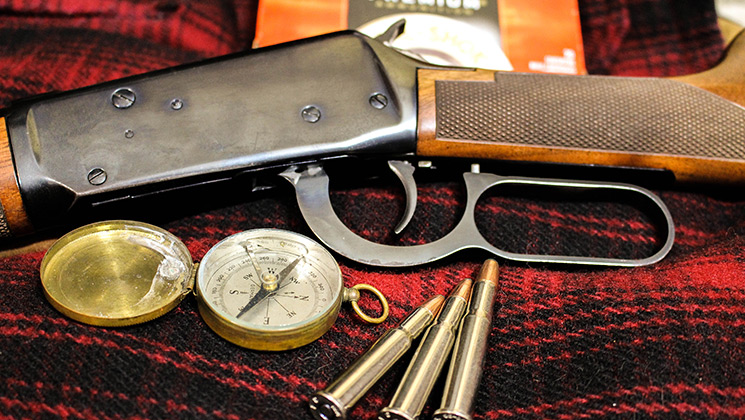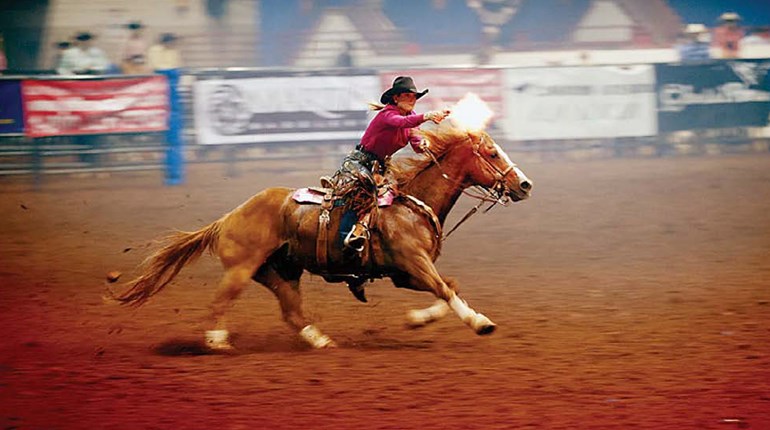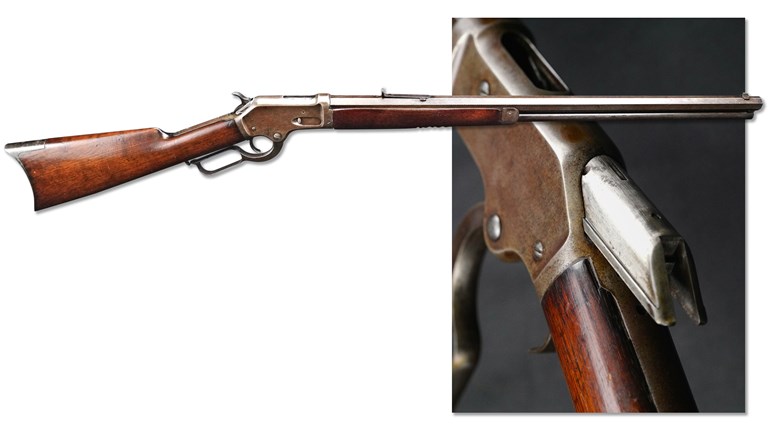
My fifteenth birthday was one I’ll always remember. Though my parents had divorced a year or so prior, they were both present at the family get-together, and that alone was enough for me. I lived with Mom, but worked for Dad, so I got plenty of time with both of them, but it was nice to have them both at my birthday. The birthday gifts were always appreciated, but when Ol’ Grumpy Pants handed me a long, thin cardboard box—wrapped in the hasty and nonplussed fashion that most men wrap with—my eyebrows involuntarily raised.
I peeled off the tangle of Christmas paper (wrapping paper is wrapping paper to GP), and saw that one word, in a font of all capital letters, slightly italicized, with the little serifs I’d come to know well from perusing the Gun Digest: WINCHESTER. Within that little cardboard vessel was my new best friend; the Winchester Model 94AE XTR, chambered in .30-30 Winchester, with its crisp checkering and deep blue finish, was mine. Mine, all mine. It meant something to me, something more than just owning a gun. It was GP’s way of saying ‘you’re a big game hunter, you’ve come of age’, without having to actually say it.
I killed my first deer with that rifle; I killed my first coyote with that rifle. It was, and is, a compact, easy-to-carry package, using a cartridge that is just about perfect for the woods of the Hudson Valley and Catskill Mountains. It was mine, and I was a big game hunter, like my father and my grandfather. It gave a very quick follow-up shot, and the sound and feel of working that lever still makes me happy inside. Not so much because the simple combination of steel and wood makes such good sense as a deer rifle, but because that sound is one I equate with adventure. And adventures we did have, leading to a love of big game hunting around the globe, a passion for handloading, and now a career as a writer. Thank you GP, and thank you Winchester.

What is it about a lever-action rifle that still appeals to us all? It’s certainly not ‘cutting-edge’, like a stainless steel/synthetic stock bolt gun with a 30mm tube riflescope and laser rangefinder. It’s not archaic either, like a sweet-stocked flintlock, with burled figure and brass accoutrements, but instead it represents both the era of westward expansion, and the classic wool-plaid garment and pipe tobacco era of our grandfathers’ hunting tales. The lever-gun predates the bolt-gun we all love, and held the public’s eye for decades, especially before reliable telescopic sights were available. They were light, powerful, handy for the day-to-day chores that a firearm is called upon for, and were (and are) handed down from father to son. My grandfather carried a Savage Model 99F in .308 Winchester; my Dad shot his first buck with a Marlin Model 1893 in .30-30 Winchester; my Dad’s mentor, David W. Miller carried a Savage 99 in .250/3000; his brother preferred the Winchester Model 71 in .348 Winchester; Dad later fell in love with a Browning Model 1886 in .45-70, and the list goes on and on.
For an iron sighted rifle, the lever guns give a good, long sighting radius for accurate shooting—within the effective range of the chosen cartridges, many of which were short or medium-range rimmed affairs. But, for the hunter who haunts the thick woods of the East Coast and northern West Coast, the range limitation is no handicap. As a matter of fact, with 150 yards, I’d confidently put money on some of the hunters I’ve mentioned, with no more than iron sights, against some hunters I’ve seen using 3-9x variables; those guys knew their rifle, and knew it well.
Simply gazing upon a Henry Yellowboy rifle, or an original Winchester ’73 yields images of canvas-covered wagons, and a homestead being constructed of the most basic of natural materials, in an era when glass and iron nails were a precious commodity. Pick up the heavy-framed 1886 Winchester, and you can picture yourself stalking along an Alaskan stream, trying to use the alders and willows to screen your movements as that brown bear feeds on spawning salmon. A Marlin Model 336 or Winchester 94 simply screams “Deer Season!”, whether chambered for .35 Remington or .30-30; while a classic Winchester Model 71 Deluxe in .348 Winchester tells the world you have a bit of class, and appearances matter.
My love for levers has more than likely been subliminally influenced by the great Western movies and TV shows I was glued to as a youth; whether it was Chuck Connors, John Wayne or Clint Eastwood, the cool guys could always work a lever-gun as if it were an extension of their body. They showed that a lever-gun was fast and accurate, and that concept translates so well into the deer woods, especially on the huge deer-drives that were popular when I was a young hunter.
Are they still relevant? Absolutely. It may be that there is a bit of pressure from the hunting publications to make one feel as if you need the latest whiz-bang bolt gun, capable of hitting a playing card at 400 yards, just to be considered relevant. I have many bolt guns—and I love them all—but there is something different and downright fun in taking an iron-sighted lever gun into the woods, and using your hunting skills to get closer to your quarry. I’m not the guy who judges anyone for their method of hunting—be it rifle, handgun, archery tackle, or shotgun—but I really enjoy using a lever gun once or twice a year.
I’ve tried to scope my Model 94, with lackluster results (some of the lever guns just don’t get along with optics), but you can definitely put a scope on a Savage 99 or a Winchester Model 88; my good pal Mike Buser has his father’s 99 in .300 Savage, and will print three shot groups of less than ¾” at 100 paces. Some of the rifles with two-piece stocks will be less capable of that kind of accuracy, but I’ve seen few lever rifles that won’t give minute-of-deer-heart accuracy with one brand of ammo or another.
Would I make a lever-gun my main squeeze again? I’d have to admit I probably wouldn’t, because my hunting excursions are in a distant location as often as not; that said, I do take my Model 94—soon to be 30 years old—out with me in the deer woods. Its duties have pretty much been consigned to filling doe tags, but it still gets the call to the bullpen. If you are lucky enough to have inherited a family lever-gun, take it to the range and get it out in the woods. If you don’t have one, I highly recommend you start shopping for one. There are so many styles to choose from—there are the classic guns I’ve mentioned, as well as some with modern appointments, some that use popular pistol cartridges, so on and so forth—and I’m sure you can find one to match your personality and hunting/shooting style. Harness your inner Chuck Connors!

Want to read more from Philip Massaro? Check out the stories below:
• Top 10 Mythical Game Species
• Top 5 Monometal Soft-Point Bullets
• Top 5 Subsonic .22 Long Rifle Loads
• The Most American Rifle Cartridge
• Tips for the Traveling Hunter
• How to Choose a Gun Safe
• Best Gun Cases for the Traveling Hunter
• An Ode to the .30-06 Springfield
• Top 5 Boutique Bullet Companies
• Top 5 .22 Long Rifle Loads
• 5 Reasons Round-Nose Bullets Are Still Cool
• Top 5 Dangerous Game Loads
• Top 5 Turkey Loads
• 5 Rifle Cartridges That Need to Make a Comeback
• Top 5 Safari Calibers
• 5 New Year's Resolutions for Hunters
• What Your Favorite Rifle Cartridge Says About You
• America's Most Wanted Cartridges
• America's Strangest Game Laws
• What Your Favorite Rifle Cartridge Says About You, Part II
• Top 5 Overrated Rifle Cartridges
• Top 5 Underrated Rifle Cartridges
• 5 Cartridges You Might Not Know About
• Top 5 Wildcat Cartridges
• An Ode to the Ruger Mini-14
• Top 5 Hog Loads
• Top 5 Deer Bullets
• Why .30-30 Winchester Will Never Die



































